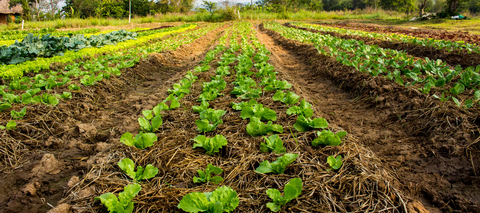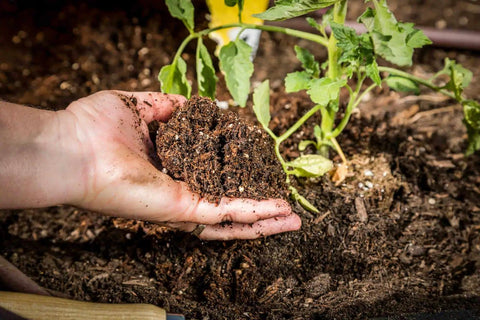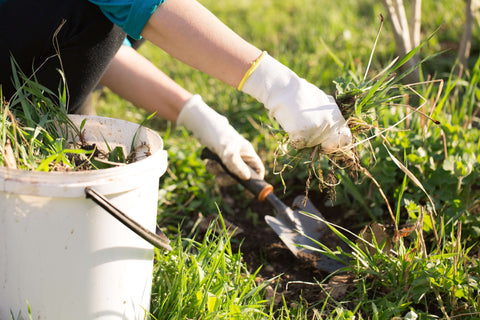Raised bed gardening offers a versatile and efficient way to grow plants, enabling better control over soil quality and conditions. To maintain the health and productivity of your raised bed garden, incorporating a well-planned crop rotation strategy is essential. Crop rotation is a time-tested agricultural practice that involves changing the types of crops grown in specific areas over different growing seasons. In this blog post, we'll explore the benefits of crop rotation in raised beds and discuss how this practice helps in balancing nutrients, preventing diseases, and promoting thriving plant growth.The following content also has some reference value for raised garden beds.

Understanding Crop Rotation
The Importance of Crop Rotation
- Nutrient Balance
Different crops have varying nutrient requirements. Crop rotation helps prevent the depletion of specific nutrients from the soil, ensuring balanced fertility over time.
- Disease Prevention
Pathogens and pests that affect certain crops can build up in the soil over time. Rotating crops disrupts their life cycle, reducing the risk of disease outbreaks.
- Weed Control
Crop rotation can help control weeds by interrupting their growth cycles and minimizing their establishment.
The Basics of Crop Rotation
- Crop Families
Group crops based on their botanical families. Plants in the same family often have similar nutrient needs and vulnerabilities to diseases and pests.
- Rotation Patterns
Rotate crops in a systematic sequence, avoiding planting the same or closely related crops in the same spot for consecutive growing seasons.
Implementing Crop Rotation in Raised Beds
- Design Your Crop Rotation Plan
Plan a rotation schedule for your raised beds based on the types of crops you intend to grow. Consider the specific needs and vulnerabilities of each crop.
- Choose Compatible Crops
Opt for crops that are compatible with the raised bed's microclimate, light exposure, and soil type. This ensures that each crop has optimal growing conditions.
- Follow a Rotation Sequence
Rotate crops based on a predetermined sequence, ensuring that plants from the same family do not follow each other in the same bed.

Benefits of Crop Rotation in Raised Beds
- Optimized Nutrient Use
Crop rotation balances nutrient usage, preventing the depletion of specific elements and enhancing soil fertility.
- Disease Prevention
Rotating crops disrupts disease cycles, reducing the risk of soil-borne pathogens affecting your plants.
- Reduced Pest Pressure
Pests that target specific crops have fewer opportunities to establish themselves, reducing the need for chemical interventions.
Sample Crop Rotation Plan for Raised Beds
- Year 1: Legumes
Plant legumes such as beans and peas that fix nitrogen in the soil, enriching it for future crops.
- Year 2: Leafy Greens
Follow legumes with nitrogen-loving leafy greens like lettuce, spinach, and kale.
- Year 3: Root Crops
Rotate to root crops like carrots, radishes, and potatoes, which don't demand excessive nitrogen.
- Year 4: Brassicas
Plant cabbage, broccoli, or other brassicas, which have different nutrient requirements and help prevent soil-borne diseases.

Tips for Successful Crop Rotation
- Keep Detailed Records
Maintain a gardening journal to track which crops were grown in each bed and when, aiding in planning future rotations.
- Practice Observant Gardening
Regularly inspect plants for signs of disease, nutrient deficiencies, or pest infestations. Early detection allows for timely intervention.
- Add Organic Matter
Between rotations, add compost or well-rotted manure to enrich the soil and provide a nutrient boost for the next crop.
Conclusion
Crop rotation in raised beds is a holistic approach to nurturing healthy plants and maintaining vibrant, productive gardens. By carefully planning the rotation of crops based on their nutrient needs and vulnerabilities, you can prevent soil depletion, reduce disease risk, and support balanced ecosystem dynamics. The beauty of raised bed gardening lies in its adaptability, and incorporating a thoughtful crop rotation strategy elevates your gardening practices to a new level of sustainability and success. Embrace the art of crop rotation and watch your raised beds flourish with robust plants, bountiful harvests, and thriving garden ecosystems.









